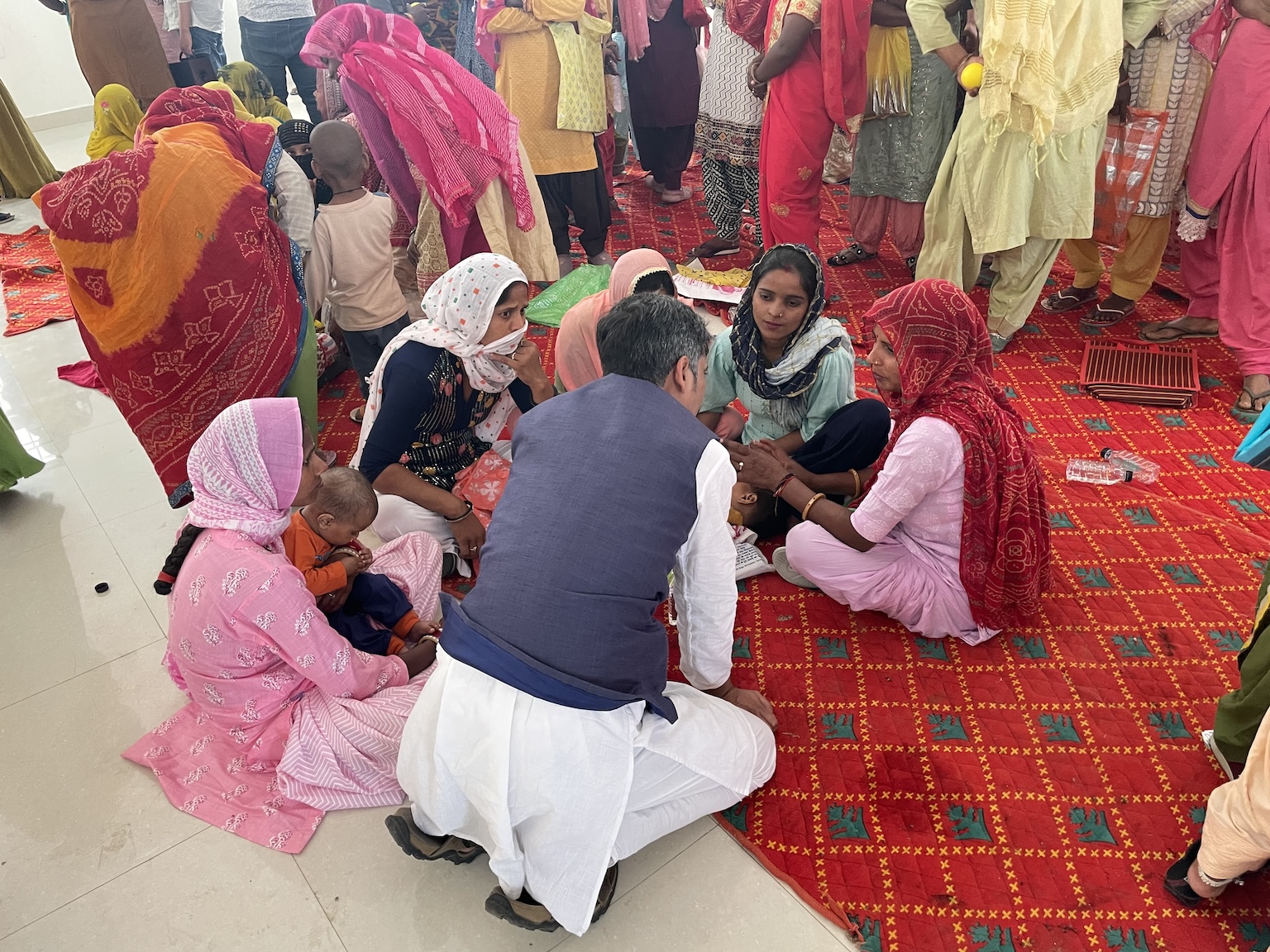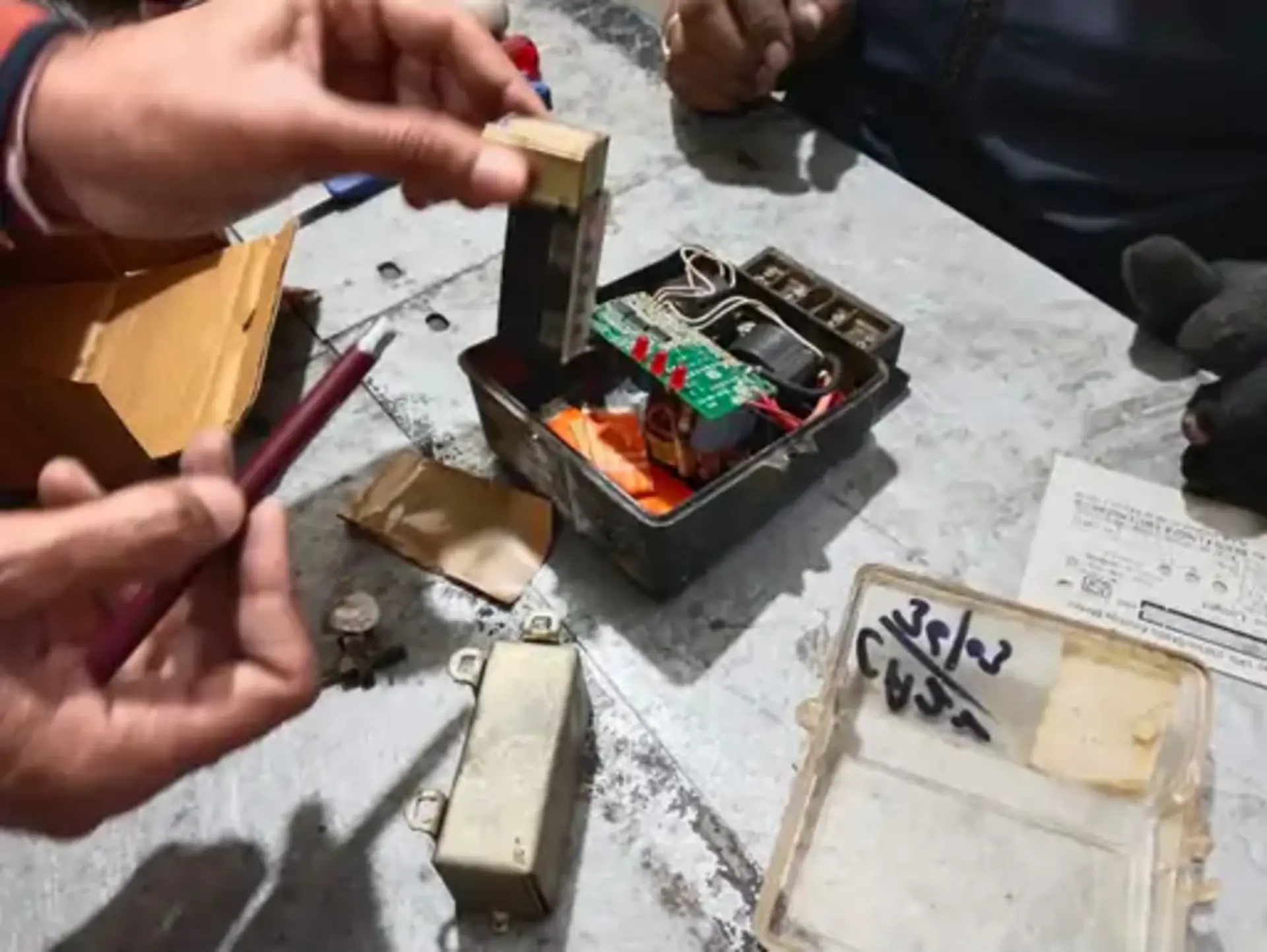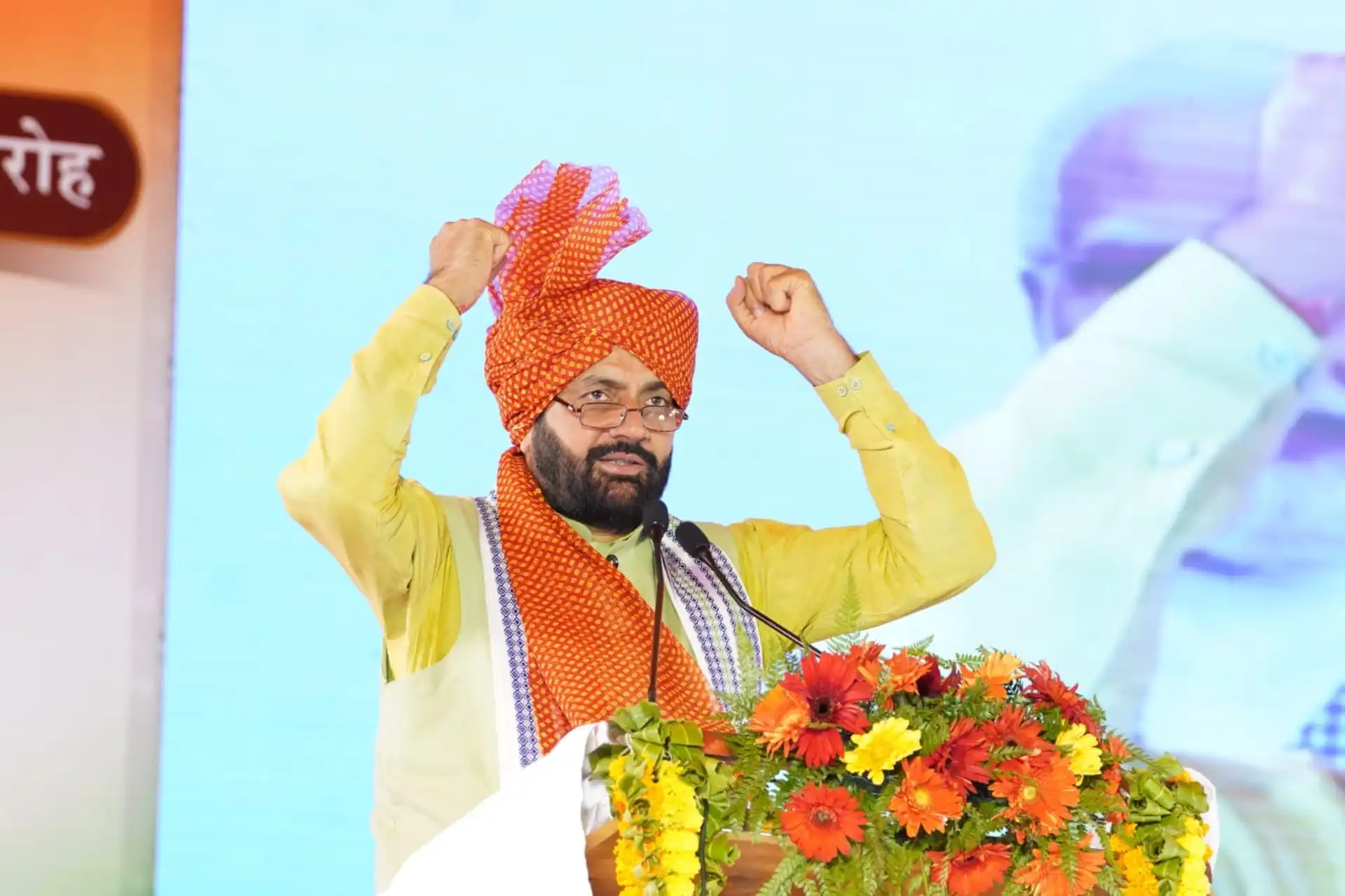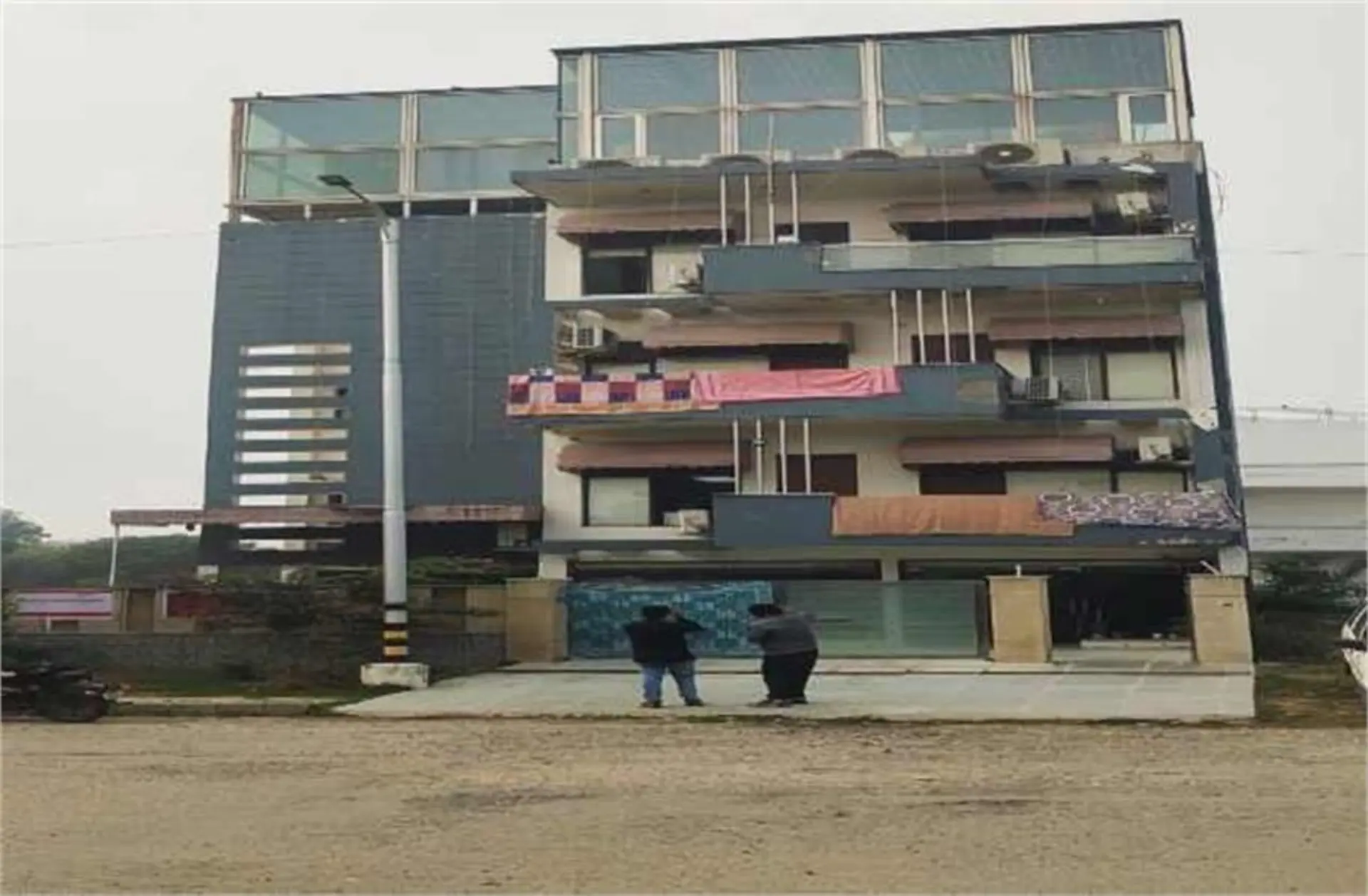
About the Author: Ankit, from Mahendragarh, Haryana is currently a PhD scholar of Sociology at the University of Wroclaw in Poland. He has been awarded CPID research fellowship and as part of it, he has carried out a data collection survey about the socio-economic and demographic details of the cross-regional families or "paro" families in Narnaul block of Mahendragarh district. A first of its kind.
In January 2024, the Mahendragarh district of Haryana had the lowest sex ratio at birth (SRB) among all 22 districts, with a meager 824. The district performed poorly in 2023 as well. It had the second lowest sex ratio at birth for the year, with a modest 887. Based on the 2011 census data, the district had the second lowest child sex ratio (0-6 age group) nationwide. The district's sex ratio has remained stagnant without any indications of improvement over the years. Years of gender bias and the practice of female feticide have resulted in a severe imbalance, with a disproportionately low number of women. According to sociological studies conducted by researchers such as Ravinder Kaur, Paro Mishra, Shruti Chaudhry, and Reena Kukreja, there is a phenomenon where men from areas with a demographic disparity seek brides from other regions. This has resulted in an increase in cross-regional marriages over a long period of time. These marriages are arranged between individuals from different states, cultures, and regions that vary in terms of languages, food patterns, and other factors. While some view these unions as a natural consequence of the gender imbalance, others, including certain non-governmental organizations (NGOs), have raised concerns about potential bride trafficking and exploitation. Numerous cases have been documented where women brought from the eastern or north eastern states of India have been subjected to multiple sales in rural Haryana.
Although cross-regional marriages are common in rural Haryana, there is a notable absence of accurate estimates regarding the total number of these families in the region. Furthermore, there is a scarcity of information regarding the particular regions or districts in Haryana where these marriages are frequently observed. Moreover, the methods and avenues by which brides are obtained for these marriages are mostly unrecorded and unexamined.
A groundbreaking survey was conducted for the first time, covering all 52 villages in the Narnaul block of Haryana. This survey aimed to provide a detailed and thorough analysis of the patterns and trends of marriages that occur between different regions in the area. This innovative initiative sought to collect extensive data and gain deep insights into the complex social and demographic patterns that underlie these marital unions. The survey focused on a particular geographic area in order to gather important data on the frequency, qualities, and subtleties of marriages between different regions in rural Haryana. This would contribute to a more comprehensive comprehension of this phenomenon. The objective of this demographic survey was to investigate important inquiries regarding the origin and socio-economic background of the women participating in these marriages, the socio-economic status of their husbands, the average number of children in these families, the age difference between spouses, and the typical age at which these marriages occur.
Narnaul, being the district headquarters of Mahendragarh district, was selected for the survey due to its strategic importance and the presence of 52 villages, constituting 15% of the entire district. Additionally, local media reports indicated a higher prevalence of cross-regional marriages in this area. Furthermore, the availability of good support from block-level authorities facilitated the survey process. During our attempts to engage with the block-level authorities, Smt. Renu Lata Yadav, block development and panchayat officer of Narnaul immediately extended her cooperation. She expressed keen interest in learning about the overall socio-economic and demographic situation of cross-regional families in Narnaul through our final data. Smt. Yadav went a step further and wrote a letter to all the village sarpanches, requesting their cooperation in the data collection process. This gesture greatly facilitated our work, barring a few minor incidents where some individuals refused to entertain anyone to talk about their marriages. In one or two such incidents, husbands of cross-regional wives objected to the data collection and questioned our motives, asking who had sent us and what we intended to do with the information. They were hesitant to discuss internal family matters concerning their marriages. However, with the assistance of the sarpanches, we could effectively communicate that this was merely a data collection exercise focused on families where women did not originate from Haryana, aimed at research and data analysis purposes. Aside from these isolated cases, our data collection progressed smoothly. This data was later analysed descriptively using the Jeffrey’s Amazing Statistics Program (JASP) which is an open-source statistical software package.
Among the 497 families, a significant majority of 257 or 51.5% consist of women who have married from Uttar Pradesh. Subsequently, there were 59 women from Bihar, 48 from Assam, 37 from West Bengal, 22 from Madhya Pradesh, 17 from Odisha, 15 from Jharkhand, and the remaining 42 women from states such as Maharashtra, Chhattisgarh, Tripura, Karnataka, and even 3 women from Nepal.
|
Frequencies for Native State |
||
|
Native State |
Frequency |
Percent |
|
Arunachal Pradesh |
1 |
0.201 |
|
Assam |
48 |
9.658 |
|
Bengal |
37 |
7.445 |
|
Bihar |
59 |
11.871 |
|
Chhattisgarh |
12 |
2.414 |
|
Gujrat |
1 |
0.201 |
|
Himachal |
1 |
0.201 |
|
Jharkhand |
15 |
3.018 |
|
Karnataka |
1 |
0.201 |
|
Madhya Pradesh |
22 |
4.427 |
|
Maharashtra |
9 |
1.811 |
|
Nepal |
3 |
0.604 |
|
Odisha |
17 |
3.421 |
|
Punjab |
2 |
0.402 |
|
Tamilnadu |
2 |
0.402 |
|
Telangana |
1 |
0.201 |
|
Tripura |
5 |
1.006 |
|
Uttar Pradesh |
257 |
51.710 |
|
Uttarakhand |
4 |
0.805 |
|
Total |
497 |
100.000 |
Despite Uttar Pradesh and Punjab being adjacent states to Haryana, we classified families with brides from UP and Punjab as cross-regional. This is because the women traveled from distant areas such as Allahabad, Varanasi, Mirzapur, or Amritsar, where cultural differences from Haryana are significant. However, marriages from Rajasthan were excluded from the data because Mahendragarh district shares a border with Rajasthan and the cultural disparities between the two regions are comparatively less significant.
“My elder sisters were married in Maharashtra only, but due to loans on dowry payments, my father decided to not marry me locally. Then with some connections, as other women had already married in Haryana, my father got in touch with a relative who was happily married in Haryana, that woman arranged for me to marry in Haryana. Thats how I got married here.” (a woman from Maharashtra)
“One of my friends from Allahabad is married nearby, she married four years ago, she arranged a marriage for me as well in her husband’s relation and that’s how I got married here.” (a woman from UP)
The average duration of marriage here is 8.129 years, indicating that the majority of these marriages are relatively new and have occurred recently. The earliest recorded marriage occurred 45 years ago.
Out of the states with the highest number of women, Bengal has an average of 14.135 years of married life, followed by Tripura with 14 years, while UP only has an average of 6.22 years of married life so far. It shows that initially marriages started taking place from women coming from faraway states such as Bengal and Tripura and when cases have increased over last few years, majority have started coming from states comparatively near to Haryana such as UP or MP.
Married years for Bengali women:
Married years for women from UP:
The predominant channel facilitating these cross-regional marriages appears to be the recruitment of women from familiar villages by their fellow women who have already undergone such alliances. In most cases, the younger brides were recruited by older members of their community. While this practice raises concerns about potential trafficking, it could also be attributed to various factors. One plausible explanation is the interaction between migrant laborers, who arrive in Haryana seasonally, and the local Haryanvi community. This interaction may foster networks that facilitate many of these cross-regional marital unions. However, further in-depth investigation is warranted to comprehensively understand the underlying dynamics and motivations driving this phenomenon.
The study also collected data on the participants' caste, specifically the caste to which they are presently married. The Ahir caste, which is the predominant caste in the region, is also found to be the majority in these families. There were a total of 277 families belonging to the Ahir caste, followed by 71 Jat families, 50 Brahmin families, 28 Chamar families, and 14 Saini families. The remaining families originated from different castes, including Rajputs, Sunar, Gurjars, and Kumhars. The Yadav families consist of 158 women from Uttar Pradesh, 30 from Assam, 25 from Bengal, and 24 from Bihar. It is evident that many of these marriages are inter-caste because Bengal or Assam have smaller Ahir populations. Obtaining the caste data of women based on their own background proved to be quite challenging, as none of them were willing to disclose their true caste. Instead, they only indicated the caste they acquired through marriage. This phenomenon can be attributed to the fact that many of these women encounter derogatory comments or insults based on their own caste. In order to avoid such remarks, they opt to only mention the caste into which they are married.
|
Frequency of Castes |
||
|
Caste |
Frequency |
Percent |
|
Brahmin |
50 |
10.060 |
|
Chamar |
30 |
6.036 |
|
Gurjar |
7 |
1.408 |
|
Jat |
72 |
14.487 |
|
OBC |
27 |
5.433 |
|
Rajput |
2 |
0.402 |
|
SC |
8 |
1.610 |
|
Saini |
14 |
2.817 |
|
Yadav |
287 |
57.746 |
|
Total |
497 |
100.000 |
There are a total of 738 children in 497 families, resulting in an average of 1.48 children per family. The standard deviation of 1.032 indicates that there are multiple families with two or more children. It serves as evidence to demonstrate that the primary motive behind such marriages is to procreate and ensure the continuation of the family line. The majority of the sarpanches interviewed confirmed that there are no legal issues associated with these marriages, and the children are considered legitimate heirs.
|
|
|
"Indeed, the marriage is undoubtedly driven by necessity as they are unable to find local girls to marry. However, the offspring resulting from these marriages between individuals from different regions are considered legitimate." (one sarpanch highlighted)
The majority of older children fall within the age range of 0-10 years. In order to gain a comprehensive understanding of the well-being of children in such households, it is imperative that we conduct further longitudinal studies focusing on their mental and psychological health as well as their educational achievements. The missing data in this study pertains to the sex ratio within these families, specifically whether there is a higher prevalence of boys or girls. Based on the sex ratio trends, it is not surprising to anticipate a higher number of males than females.
However, a concerning issue is the growing disparity in age between husbands and wives. The average age of husbands is currently 34.9 years, with 15 missing data values due to their deaths. The average age of wives is currently 27.9 years.
The age at which they got married were 27.3 years and 19.8 years, respectively. There are situations in which the difference in age exceeds 15 years. It is evident that women bear a greater burden than men when it comes to the responsibility of raising children.
|
|
|
The young age of these cross-regional women at the time of marriage likely indicates their origins from either impoverished households or larger families with many siblings. In such cases, parents often arranged early marriages to alleviate financial burdens. Notably, interviews with the women revealed that almost all wedding expenses were borne by the groom's side, effectively saving their families from the dowry burden. These unions can be characterized as dowry-less marriages, providing relief to the bride's family.
Overall, education level: 0-No education; 1-up to 5th standard; 2-up to 8th standard; 3-up to 10th standard; 4-up to 12th standard; 5-Graduate; 6-Postgraduate
|
|
|
|
|
|
Only a small number of these women have pursued education beyond the 12th grade. Due to a lack of educational opportunities throughout their early years, married women from different regions face difficulties in offering the essential academic assistance and supervision to their children. This situation gives rise to serious worries over the educational possibilities of the younger generation in these homes, which could potentially continue a cycle of restricted educational chances and limited social and economic mobility. However, it is a fact that only a minority of these women who come from different regions are employed or have independent means of income, such as working as tailors or in tiny salons, in Narnaul. Most of women rely on their husbands for financial support, with the husbands and bear the responsibility of educating children since men, who are typically employed as laborers, drivers, and in similar occupations, have a substantial age difference with their wives. This economic reliance prompts inquiries as to whether these unions have genuinely resulted in hypergamy, which denotes an enhancement in the women' social standing. Although they have moved from their original states, their financial circumstances do not seem to have notably alleviated, as they still face comparable economic limitations as before. In order to truly empower these women, it is essential to make ongoing and dedicated efforts to provide them with sustainable employment opportunities and help them achieve financial independence.
It is worth mentioning that a minimum of 464 women, which accounts for 93% of the total, reported having some sort of communication or regular visits with their maternal families, either through phone calls or in-person visits. Only a minority of them have never visited their family in their hometowns, and this can be attributed to several circumstances, including as their families living far away, their own financial constraints that prevent them from spending a lot on travel, and a lack of motivation from their married families to visit their homes. This evidence once again disproves the assertions of bride trafficking, which suggest that there is no possibility of touch with the maternal relatives.
Presently, there are a mere 20 women from different regions who are part of self-help organizations that have been set up under the National Rural Livelihood Mission (NRLM). This suggests that the authorities responsible for making decisions at a higher level have not given importance to including these women as members.
In a heartening initiative, women from cross-regional families in Narnaul have found solace through the support of the NGO Empower People which is based in Delhi. Recognizing the pressing need for employment opportunities, a platform for sharing stories, and a renewed sense of self-worth, this organization has stepped in to uplift these women. With a history of championing such marginalized groups, Empower People has facilitated vocational training, self-help groups, and counseling sessions, fostering a sense of community and sisterhood. Notably, the NGO is forming a 'Solidarity Forum' aimed at creating solidarity between groups of these women, with the first meeting already taking place with an impressive participation of 90 women. By providing a safe space for these women to express themselves, find employment, and realize their inherent human value, this endeavor has ignited a beacon of hope, enabling them to overcome societal barriers and embrace their true potential.















